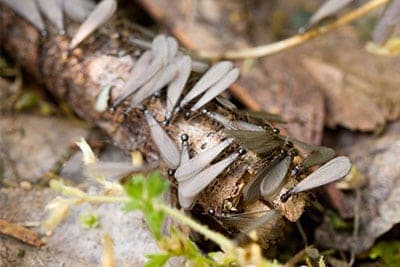Latin Name: Cryptotermes spp. and Incisitermes spp

Dry-wood termites are scavengers by nature. They stay in undecayed wood because of their low moisture content. They are easy to differentiate from Subterranean because they live in sound, dry wood above ground level. They do not necessarily need to contact soil to survive, making them even more destructive. When a termite chooses their place for habitation, they work in pairs; that is, a male and a female find their way into the wood and seal the opening with a plug of brown content. The female lays the first set of eggs, and the nymphs hatch to form a colony.
Termites are scavengers by nature. Aside from wood, you will also find them feeding on paper and other materials like cellulose. You can also find termites invade structural buildings, and when they do, they form severe structural damage.
There are three different groups of termites, i.e., subterranean, damp wood, and dry wood. Dry wood Termites and every other group’s worker look the same. However, their alates (the reproductive caste) have two sets of wings. The front wings have a pattern with three or more well-pigmented veins that form the frontal wing. The swarmers most times shed their wings every time after swarming. Their swarmers are usually 12 mm long. Dry wood termites have large mouthparts with teeth and wide pronotum that are even wider than their head. Most dry wood termite soldiers and workers are longer than subterranean. They are usually about three-eighths of an inch long.
Dry wood termites are pale brown, though some are between dark brown and light yellow. Their alates have wings that are primarily smokey grey or clear in color.
Dry wood termites are prevalent in areas with a lot of moisture and humidity because they can only survive in such areas. They do not construct their nest on the ground but create it in dry, above groundwood. They enter the home through exposed or infested wooden furniture. They also create colonies in wood and cellulose materials, often in attic wood and anywhere with little moisture. You’ll find them around attics, fascia boards, and soffit areas.
They are common in Florida and California because of their warm to tropical climates. Also, because they have a lot of wooden structures and their winters are usually severe.
Just like any other termites, dry wood termites are scavengers. They feed on cellulose found in wood and other plants. You can also find them in homes, trees, fences, infesting on decks, furniture, and any dry wooden part of the house. They tend to nest underground but will always prevent the soil as they do so. They infest utility poles also, and they enter the house by penetrating wooden shingles.
The first sign that shows the presence of termites is their winged reproductive swarming from small openings in the wood surface. Although they mostly lose their wings during swarming, that wing is still a prominent differentiating feature. Once you sight the swarmers, which usually occur in pairs, you will find the colony in structural timbers of the building or nearby wood or bush if it is outdoor. The swarmers are typically attracted to light and can enter the homes from outside. Search for termite bodies and wings in cobwebs, window sills, and light fixtures to confirm the infestation.
Another thing you can look out for is fecal pellets. Their pellets are usually the same color as the wood the termites are feeding on. They are 1/32 inch long and look like long dimples on the wood surface. They are usually pointed at both ends too. Dry wood termites extract water from their feces to conserve it such that what remains is something that looks like frass.
They may be harmless to humans, but once there is an infestation, you will notice damage in the structures because these termites chew tunnels in wooden objects, making them weak.
It is pretty challenging to keep termites away from your structures. However, you can ward them away by:
If you suspect these pests are in or around your home, give us a call for a Free Home Inspection!
